Posts tagged with Grid
Here you can find a listing of all posts with the tag Grid on my page.
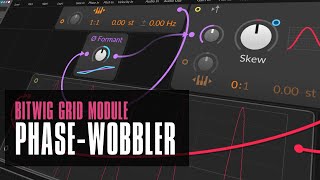
Oct 10, 2023 Tutorial
In today's video, I explain the Formant module in Bitwig Studio. The module amplifies the incoming signal around 0.5, allowing for modifications to waveforms. It can be used to create wobble bass sounds, shape waveforms, and add vocal qualities to signals.

Sep 11, 2023 Tutorial
In this video, I'm going to show you my setup for synthesizing snare and rimshot sounds using the pulley grid in my DAW. I use the pulse oscillator because it already has a lot of overtones, so I don't need to use as much post-effects distortion. I set the frequency to around 150-160 Hz for a deep snare sound. I use an AD envelope to trigger the sound and apply an EQ5 in the PostFX to analyze and shape the signal. By adjusting the sync, I can create two partials or amplify the second harmonic. I add a Moog low pass filter and use the shape output of the AD envelope for frequency modulation. This creates a nice snare sound. I also add some noise using a noise burst and a mixer. I shape the noise with segments and use a high pass filter. I then apply a hard clip and use dither and diffusion for added spice. The EQ is crucial for shaping the sound, and by cutting below 1k and boosting around 1k, I can create a rimshot sound. I can also tweak the settings to create deep snare sounds. I can detune the oscillator slightly for a wider sound. Overall, there are many possibilities for customization using these knobs and EQs. I can also add pitch modulation if desired. Finally, I can apply a convolution effect to add roominess to the sound. This setup is great for drum and bass, dubstep, and other genres, providing a clean and focused sound.
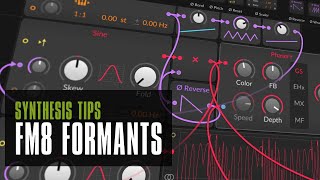
Aug 28, 2023 Tutorial
In this video, I talk about my journey of using FM8 for bass lines and how I incorporated that knowledge into using the Scroll in the Grid. I explain how I used one oscillator for a pure sine bass sound and another oscillator with different wave shapes to create overtones. I show how you can recreate these sounds in the Grid by using formant wave shapes and modulating them with a sine oscillator. I demonstrate the use of filters and phasers to further modify the sound. Overall, I discuss how this journey of experimenting with different techniques allowed me to create interesting and unique bass patches.
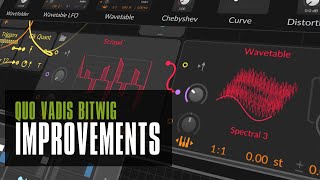
Aug 24, 2023 Tutorial
In this video, I talk about some small changes I would like to see in future versions of Bitwig Studio. I acknowledge that Bitwig Studio is already amazing and I have no complaints about it. However, there are some features that I think could be improved upon. One feature I feel needs some love is the recorder module in the grid. It lacks persistence, meaning that when you save and reload a preset or project, any recorded data is lost. I suggest adding a feature to persist data or introduce a module similar to the sample and hold that can save values.
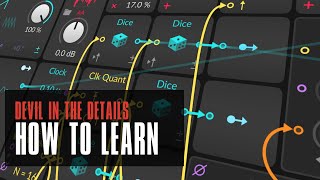
Aug 21, 2023 Tutorial
In this video, I discuss how to learn and understand the grid in music production. Many people have misconceptions that taking a course will make them a professional musician, but that's not how it works. A course can provide the basics, but real learning happens through trial and error, researching and experimenting. I explain that it's important to overcome problems on your own and develop problem-solving skills. It's not about memorizing individual modules, but rather understanding how to use them in different contexts. I emphasize the importance of researching online, reading the manual, and exploring different resources to gain knowledge. I also share my own process of learning, documenting, and experimenting with patches. Learning music production is an ongoing process that involves constant learning and building experience.
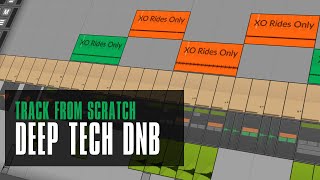
Aug 16, 2023 Tutorial
Discover the art of crafting drum & bass in Bitwig. In this tutorial, we delve into setting the pace at 170 BPM, a typical drum & bass speed, and explore the intricacies of loop creation. We also introduce a custom grid patch named 'Drum & Bass Drums' and demonstrate its sound dynamics. While the patch is available on Patreon, alternatives like random drum bass loop wave files can also be used. The tutorial emphasizes the importance of modulation, the use of different synthesizers for unique bass sounds, and the strategy of building an arrangement progressively. By the end, with minimal compression and limiting, we achieve a deep roller track that's loud and clear. For those interested, the drum preset will be available on Patreon, and there's a possibility of a full track release on Bandcamp in the future.
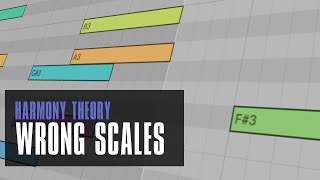
Aug 07, 2023 Tutorial
In today's video, I want to discuss melodies, chords, and scale highlighting features. Somebody commented on my previous video about using a note grid that emits random melodies and modifying it with a key filter to accommodate those who are less familiar with music theory. However, I believe this approach is not feasible because the scale highlighting feature in Ableton Live, for example, can be misleading. When you select the scale feature in Ableton Live, it highlights certain notes in green. For C major, all the white keys are highlighted. However, it also selects other scales and modes such as D Dorian, E Phrygian, and so on.
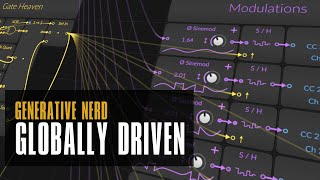
Jul 31, 2023 Tutorial
In the video, I showed how to make music in Bitwig Studio using global modulators. I used two step modulators, one for values and one for melody. I connected them to a polymer synthesizer and routed them through a node grid. I used the values from the step modulator to modulate various parameters in the synthesizer, such as decay time, amplitude envelope, and mix levels. I also used the melody step modulator to generate notes and trigger them using clock and XOR modules. I demonstrated how changing values in the step modulators can instantly modify the sound and trigger different sequences. Overall, it was a fun and nerdy way to create music in Bitwig Studio.

Jul 24, 2023 Tutorial
In this video, I demonstrate how to create a trumpet or saxophone sound in Bitwig's grid using subtractive synthesis. I avoid using samples, wavetables, or physical modeling. The sound is shaped using pinch and bend modules, as well as a phaser, before going through a filter and an amplitude modulation module. I also add filtered noise to simulate the air going through the horn. To simulate the characteristics of different instruments, I use fixed frequencies in an EQ module. An impulse response and delay are used to simulate room and add space to the sound. The main trick of the preset is shaping the phase signal with pinch and bend modules, which creates trumpet-like harmonics from a sine wave. I use Bitwig's expression modulator to map timbre, pitch bend, and pressure to add expression to the sound. I show how to do this in a separate polygrid. It took some time to find the right modulation amounts and timings, but the result is a cool and realistic trumpet sound. The preset is available for Patreon and YouTube subscribers, while others can try out the techniques I demonstrated.

Jun 09, 2023 Tutorial
In this video, I explore using global modulators in Bitwig to send signals from one channel to another. I start by showing how it's not easy to route signals from the Polygrid device to a different channel. Then, I suggest using a DC offset in the FX box and muting the channel to generate audio signals that can be grabbed with an audio rate modulator to easily modulate something on a different channel. I explain how this workaround can be used on multiple channels and how it can be set up as a preset for future use. I also note that there could potentially be latency issues when using multiple VSTs, but I haven't tested it yet.
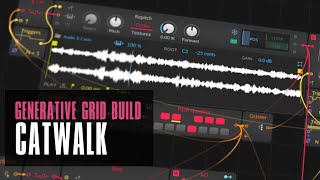
May 24, 2023 Tutorial
In this video, I wanted to create a generative grid patch using samples instead of oscillators, which I had never done before. I recorded a kalimba using my microphone and then cleaned it up with a loud split and an outer leveler. I then used it in a polygrid and triggered it with a dice module in free mode, adding notes with a step mode and quantizer. I also added modulation, filters, and delays to the sound. I then added a bass shot and a melody using a sample note. Finally, I randomized the melody and adjusted the balance and frequency using a cool force. I created a backdrop for an ambient tune and provided a link to the patch in the description.
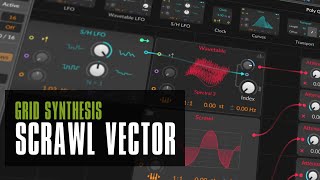
May 03, 2023 Tutorial
In this video, I show the viewers how to do vector synthesis in Bitwig's grid using the x,y coordinate pad and multiple instances of the drawable oscillator. I explain that vector synthesis involves blending between multiple oscillator shapes using a vector, which can be done with the x,y coordinate pad and multiple instances of the scroll. I also demonstrate how to use the blend modulator to fade between two inputs and give us one output waveform. I show how the bipolar mode can be used in the x,y pad for negative values and how to set up the modulation for the blend between the left and right side. I also suggest using a mod filter for subtractive shaping of the waveform and demonstrate how to set up the polyphony mode, so we can play chords. Additionally, I show how to use a vector 8 modulator, which is similar to the x,y pad, but with eight outputs. I explain how this can be used to blend between eight oscillator shapes, and how it provides more modulation for creating complex waveforms. Lastly, I give examples of how to use segments to find sweet spots for modulation and how to use wave tables for morphing the sound.
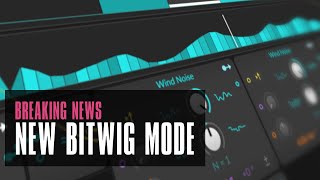
May 01, 2023 Tutorial
In this video, I share some exciting news about Bitwig Studio 8 track and 16 track in version 5, which will feature the grid in a new player mode. This means that users can load all my presets and generative patches in 8 track and 16 track. As it's my birthday, I will be giving away three 8 track codes for those who are on the fence about trying out Bitwig or for their friends. I will post codes in the comments, YouTube community page, Discord server, and Patreon page. Lastly, I thank all my followers and supporters for allowing me to do what I love.
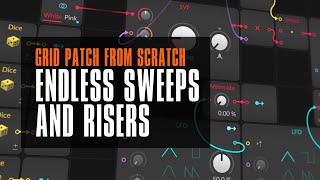
Mar 20, 2023 Tutorial
In this video, I show how to create a sweep or riser from scratch using the face module in the Bitwig Grid. The face signal is perfectly synchronized with the BPM and allows for easy modulation of volume and other parameters. I also demonstrate how to use the trigger and dice modules to generate different sounds on the fly, as well as how to use a gate signal to make the riser playable as a clip. Finally, I discuss the ability to use different face tools and effects to customize and create unique risers.
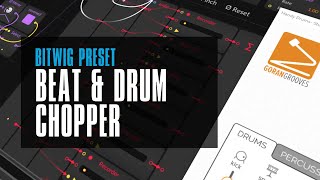
Feb 17, 2023 Tutorial
I showed how to create a beat repeater with the FX grid by splitting the drum loop into four recorders and sequencing them. I explained how to use the phase input to evenly step through the split device, and how to use the phase signal to rearrange the playback order. I also showed how to use the mirror output to create a faster playback with finer grains. Finally, I demonstrated how to use a step sequence to blend in the repeater.
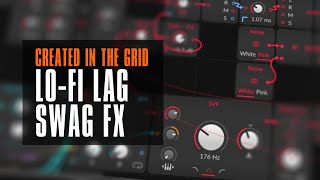
Feb 13, 2023 Tutorial
In this video, I showed a simple way of creating a lo-fi effect in Bitwig Studio with the FX Grid. I demonstrated how to use lag, noise, distortion, and modulation to create an interesting effect. I also showed how to add different filters and blend in noise to create a unique sound. Finally, I encouraged viewers to download the patch and have fun exploring and tweaking the settings.

Feb 02, 2023 Tutorial
In this video, I show how to create a poly grid to generate a tutorial for the week. I demonstrate how to use a length module and a note to get a long sustain phase with a short trigger phase that is perfect for pads. I also show how to use a Wavetable to create a melody and then layer it with random modulation, an octaver, and an external VST effect. Finally, I add a bass line and some drums to finish the patch.
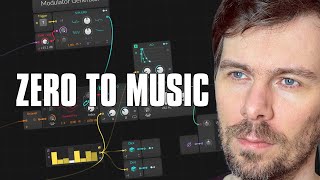
Aug 01, 2022 Tutorial
I show how to create a self-running patch in Bitwig Studio that produces predictable melodies. I start by setting up an oscillator and an envelope, and then use a gate module to trigger the envelope. I then use a sample and hold module to persist the pitch, and then use a pitch quantizer to make sure the notes are in a certain scale. I then introduce an LFO and use a phase input to modulate it so that the output is different each time. I then create a melodic pattern with a steps module, and introduce audio effects like a delay and a reverb for additional texture. Finally, I use a dice module to add variations in the decay of each note.
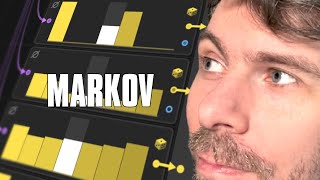
Jul 04, 2022 Tutorial
In this video, I explain how to use a probabilistic graph to generate melodies in the Bitwig grid. I demonstrate how to input a scale of nodes, as well as dial in probabilities of which node follows which. I explain how this type of feedback loop is used in machine learning, and how it can be used to generate chords and even switch instruments. I share my code on Github for free, and invite viewers to have fun with it and extend it in any way they can.
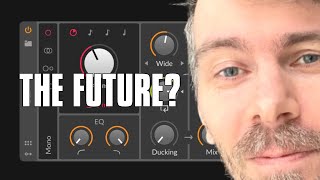
May 30, 2022 Tutorial
In this video, I explored the differences between the native Bitwig devices like EQ Plus and Flanger Plus, compared to the grid devices like Delay Plus and Polymer. I speculated that in the future, we may get container devices that allow us to build our own devices with DUI interfaces without having to hassle with the DUI designer. I demonstrated how to construct a Delay Plus-like device in the FX Grid, using a diffusion network, EQs, and a ducking knob. I concluded that while we can't replicate the Delay Plus exactly in the Grid, it is possible to create something similar in its place.
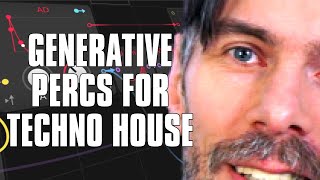
Apr 25, 2022 Tutorial
In this video, I explained the process of creating a percussion loop from scratch. I used a kick drum, e-kick by Bitwig and a bass sound made with a polymer. I then layered high heads from Bitwig Studio and XO on top. I then used a Wavetable oscillator combined with a flanger with a lot of feedback and an envelope to create a metallic sounding percussion. I then used a gate repeater and an LFO to create rolls and shape the sound. I then used an XO module to ensure only one sound was active at a time. I also used Valhalla delay, distortion delay, and halftime to give it an extra metallic room sound with a bit of distortion. Finally, I used a Newfangled Elevate, some ducking, and a limiter to finish off the sound.

Apr 20, 2022 Tutorial
I love the clock quantizer in Bitwig Studio, as it allows me to quantize signals to a steady trigger so that I can create interesting rhythms. I demonstrated how it can be used to delay manual triggers, to quantize two triggers, to create vinyl crackle, and to extract grooves from drum loops. I highly recommend using the clock quantizer to create interesting rhythms in your music.
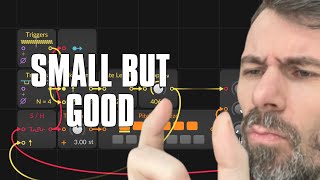
Apr 14, 2022 Tutorial
In this video, I show how to create the smallest self-generating patch in Bitwig Studio using filters, triggers and a long delay. I explain how the feedback loop works, and how the resonance changes the sound. I also suggest ways to further improve the patch, such as using a quantizer, reverb, and distortion. With some experimentation, this patch can be used to create interesting and unique sounds.
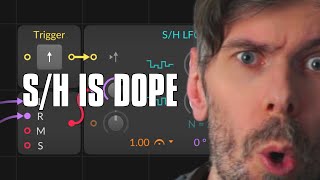
Mar 31, 2022 Tutorial
In this video, I show how to get repeating patterns out of the sample and hold LFO in Bitwig Studio. I explain that when you input a signal above one, you can access static values that repeat. I demonstrate how to patch this up using a trigger, quantizer, transpose, sample and hold, clock, oscillator, and attenuate. I also show a quicker approach using a volume knob and bias module. Finally, I thank X iso for giving me the hint about this trick.
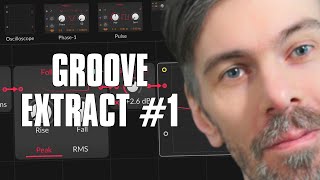
Mar 18, 2022 Tutorial
In this video, I showed a trick for synchronizing a drum loop and using it as a groove source for drum tracks. I demonstrated how to use the Note Grid, Clock Quantizer, Sidechain, Envelope Follower, Amplifier, and Gate Length to extract the groove from a drum loop and use it to control a drum sampler. This can be a helpful trick when you want to convert drum loops to other drum loops or use a different drum loop as a guide for your groove.
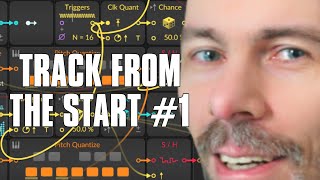
Mar 17, 2022 Tutorial
I created a generative grid patch using a ramp signal and a Wavetable to generate sound. I used a sample and hold, a filter, a reverb, a unison, a dice, and a step mod to modulate the sound and add some randomness. I used a mixer and added a feedback loop and a delay to create more interesting textures. I also used a pitch quantizer to make sure all the notes were in tune. Finally, I added a piano and kick drum to bring the patch to life.
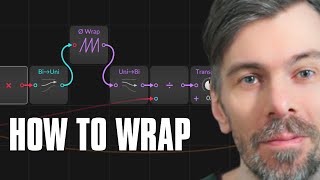
Mar 10, 2022 Tutorial
In this video, I explain how I built my note wrapping tool and why it is so useful. I use the wrap module by Bitwig to wrap values to the phase range. I then visualize this using an oscilloscope, showing that different values in the oscilloscope mean different notes. I then explain how to rescale the range so that when higher notes are input, they are wrapped within the octave range of C3 to C4. I finish by showing how multiplication and division can be used to offset the axis of the wrap module.
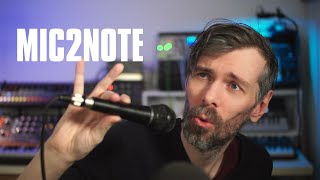
Mar 07, 2022 Tutorial
I showed how to create note information from monophonic audio material inside Bitwig Studio. I demonstrated how to use the audio receiver, spectrum device, and various filters to extract the clean fundamental sine wave from the vocals or audio material. I also showed how to use a zero crossing module, analog follower, volume knob, and polysens to create notes from the audio track. Finally, I demonstrated how to use a microphone as an input to sing and create notes at the same time.
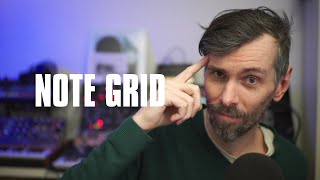
Feb 16, 2022 Tutorial
In this video, I discuss the new Note Grid device in Bitwig Studio 4.2 and how it can be used to create interesting patterns and chord progressions. I explain how the Note Grid is similar to the Poly Grid and FX Grid devices, but is specifically dedicated to node functions. I demonstrate how to use the Note Grid to create polyphonic and monophonic sounds as well as how to use it to harmonize with a chord track. Finally, I demonstrate how to use the Note Grid to target individual notes and transpose them.
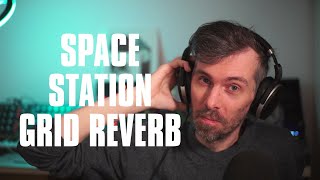
Feb 01, 2022 Tutorial
In this video, I showed viewers how to create a reverb inside Bifix Studio and the Grid. I began with loading a piano sound and then I created a stereo merge and split effect with an all pass device on each side. I then introduced a long delay and connected it to the output and input. I also added a modulation, random LFO, attenuate, and peak limiter. Lastly, I showed how to duplicate the patch and add a pitch shifter and chorus for a shimmering sound.
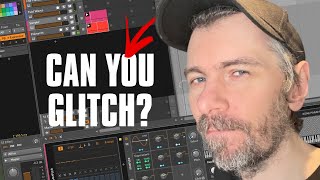
Jan 06, 2022 Tutorial
In this tutorial, I show how to create glitch sounds in Bitwig Studio by using a sampler and an arpeggiator. I demonstrate how to select multiple samples and distribute them evenly across the rotary control. I also show how to modulate the decay, pitch and loudness of the patch and use a random modulator to select different samples. Finally, I use an FX grid with a recorder and repeater to create a glitchy noise texture.
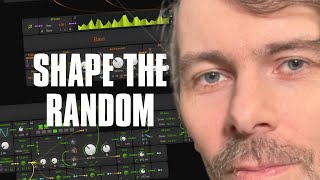
Dec 22, 2021 Tutorial
In this video, I started with an empty project in Bitwig Studio and used a random module to generate pitch and gate information. I dialed the speed to 85 BPM, and used an attenuator to limit the pitch, followed by a quantizer to bring it to a scale. I then used a clock to sync the pitch and rhythm and added a delay modulator. I then added an oscillator and a noise source to create a drone and used an LFO to add sequencing. Finally, I added some drums, a clap, and a piano sound to give the generative track some meaning.
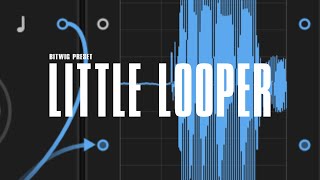
Sep 27, 2021 Tutorial
In this video, I created two new presets for my Patreons called Little Looper Synced and Little Looper raw. I explained how they work and what you can do with them. Syncd is quantized to the project tempo, while Raw lets you start and stop recording anytime. I showed how you can use them with a synth line and how you can customize the settings, such as loop length, pan, start offset, and restart. I also showed how you can use them with a radio and for sound design, and how you can replace the steps with a random or dice module. I hope this video was helpful, so if you're interested, don't forget to subscribe to my Patreon or YouTube Membership to download these presets and let me know what you think in the comments.
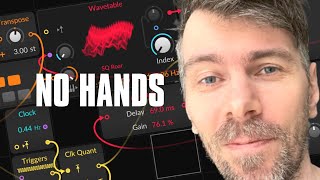
Aug 25, 2021 Tutorial
In this video, I explained how to use the Generative Meat to create your own unique track. You can use the Generator to generate a new sequence every 16 bars and then add your own kick drum, hi-hats, drums and other melodic parts. You can also adjust the note range and the sequence will always be in D sharp minor. Finally, you can add a side chain at the end and use samples from your hard drive to create a whole one hour set.
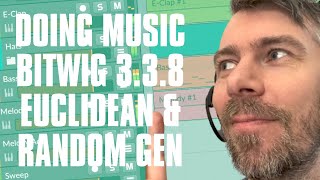
May 18, 2021 Tutorial
In this video, I take you through a journey of creating a 16-bar loop with the tools I showed in the last videos. I use a Euclidean rhythm generator, clap samples, hi hats, a Phase 1 synth, and a Polymer synth to create a nice beat. Then I use a Melody Generator and a Polysynth to create the melody. I also show you how to modulate the instruments and create transitions, as well as how to make a filter sweep. In the end, I have created a nice 8-bar loop and I hope that this video has been inspiring and educational.
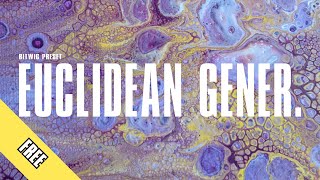
May 14, 2021 Tutorial
In this video, I demonstrate how to create a super simple patch for Euclidean rhythms in the grid. I show how it looks like in Hatefish, and then explain how to implement it in the grid. I explain the three most important parameters (steps, beats and shift) and demonstrate how they can be used to create interesting rhythms. I also show how to use macros to control the parameters and how to use the Grid Node Out plug-in to generate notes. Finally, I provide a preset to make it easier to use the patch.
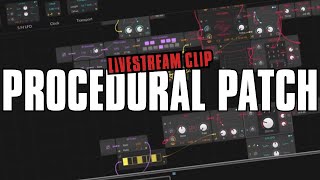
Jan 20, 2021 Tutorial
I tried out the sign mod in Bitwig, which is a modular approach to making music. It is possible to use the grid for traditional music production, but the grid is where most of the modular magic happens. I experimented with the sign mod to create a melody, and I used the modulation capabilities to add some variations. I also experimented with using a wave table to shape the sound, as well as using an AD loop and random modulators. I concluded that the grid is a lot of fun to play with, and that the team behind Bitwig needs some time to focus on certain sections of the application in order to make it more feature-rich.
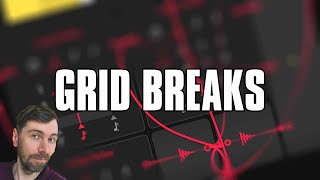
Aug 03, 2020 Tutorial
In this video, I showed how to use Bitwig Studio’s FX Grid to automate drum loop editing tasks. By using Merge modules, Value knobs, and synchronization devices, it’s possible to offset drum loops to different time ranges and add breakdowns and fill-ins with minimal effort. I also showed how to use a Mod Delay to switch between different signals, as well as how to automate using a Button and a Macro Knob.
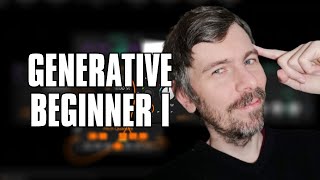
Jul 20, 2020 Tutorial
In this video I explained the basics of the grid system in Bitwig Studio, exploring the pre-cords, pitch in/out modules, ADSR, oscilloscope and how to create a generative patch within the grid. I explored how to modify the pitch signal and how to trigger the ADSR envelope with a gate input. I also discussed how to use the pitch quantizer and the gates module to create a self-playing system and how to use random modulators and transpose modules to add more dynamics.
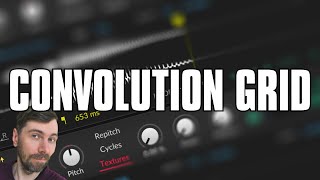
Jun 16, 2020 Tutorial
In this video, I explore the concept of convolution and whether it's possible to do inside the grid of Bitwig Studio. I showcase a preset I created that allows users to alter an input signal with a convolution signal. I explain the basic concept of convolution, which involves multiplying an input signal with an impulse response and adding it to the output signal. I share a website that helped me understand convolution better and demonstrate how I tried to make the preset work within the limitations of the grid in Bitwig Studio. I acknowledge that this preset has its flaws and limitations, but I still offer it for those who want to experiment and learn more. Overall, this video is a documentation of my learning process and I invite viewers to share their ideas and insights in the comments.
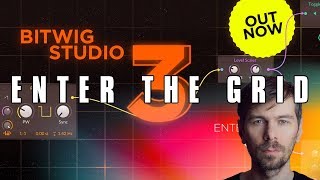
Jul 11, 2019 Tutorial
In this video, I talk about the release of Bitwig Studio 3.0 and how excited I am that it's finally available for download. I mention that there is a demo version available for those who want to try it out. I also mention that users can download the presets I created for the grid by going to the settings and packages section. I demonstrate how to use the presets with the MPE controller and discuss the different types of presets I created, including pads and beat patterns. I also mention the idea of randomizing presets and demonstrate how it works using the pulley synth and the grid. I discuss the limitation of not being able to persist the generated presets, but overall, I express my excitement for the new release and invite viewers to provide feedback and bug reports for future improvements. I conclude the video by thanking the viewers for watching and wishing them fun with Bitwig 3.0.
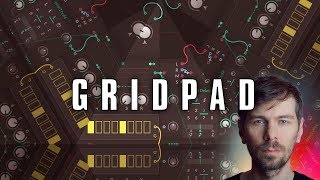
Jun 20, 2019 Tutorial
In this video, I try to create a pet-like sound inside Bitwig using the Swarm Oscillator. I start by exchanging the envelope with an RDSR and adding a modulator with random settings. I then modulate the spread value and pitch offset. I activate more voices and add all-pass filters to create a stereo effect. I also use delay and tape modules for a unique sound. I add filters and mixers to enhance the sound and use an attenuator for volume control. I experiment with different modulations and create a sequence using gates and pitches. I use logic devices to control the sequence and add a face-in device for further modulation. Overall, I explore different ideas and modules to create a textured pet sound.

Jun 14, 2019 Tutorial
In this video, I show you how to create a tape stop effect using Bitwig's FXgrid device. I use delays, ADSR, and gain volume to create the effect. By adjusting the delay buffer size, you can achieve the slow down and speed up effect of a tape stop. I also demonstrate how to create flutter effects using tape emulation plugins. Additionally, I explain how to create wave tables in Bitwig by using wave files and the sampler instrument. By using the cycles mode and wave table position knob, you can scan through the wave tables and create unique sounds.
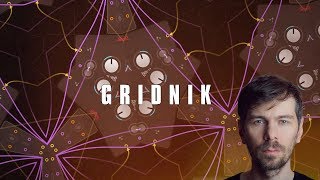
May 24, 2019 Tutorial
In this video, I addressed some of the issues that viewers had with the noise and hiss in my previous recordings. I made some changes to my setup, removing limiters and EQs, and not using the limiter in my recording program. I then went on to discuss some small changes that could improve the 3.0 release of the beta version of the software. One of the suggestions I had was to add a search field at the top of the modules section for easy navigation. I also proposed adding a lock feature that would hide cables and lock the view for those building interfaces. I mentioned some issues I had with the beta, such as flickering red overlays, and the removal of hover information overlays. Overall, I expressed satisfaction with the beta release, mentioning its stability and lack of crashes. I also mentioned a YouTube channel that focuses on synthesis and shared my own physical modeling synth presets that can be downloaded. Finally, I talked about a generative track I created and made it available for download.
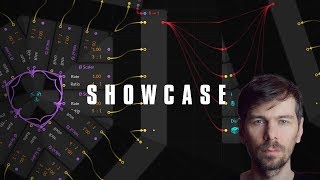
May 23, 2019 Tutorial
In today's video, I showcased some creations by Sunset on Mars, an artist who contacted me on SoundCloud. He creates ambient tracks using Bitwig Studio with minimal use of additional VSTs. I also talked about the new features and fixes in Bitwig Studio 3.0 Beta 3 and encouraged viewers to try it out and provide feedback to the developers. I then showcased a preset called Mutated Butterfly Preset, which uses impulse responses of recursive filters to create sound. Finally, I shared a glitch generator created by N. Beidt, which adds interesting artifacts to drum loops. Overall, I asked for feedback on this format of showcasing community creations and expressed my willingness to share more in future videos.
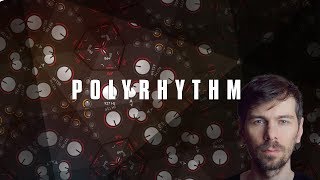
May 17, 2019 Tutorial
In this video, I downloaded the new version of Bitwig Studio 3.0 Beta 2 and explored the new features, including an output clipping parameter on the audio out of the grid device. Then, I discussed pulley rhythms and chords and how to turn chords into pulley rhythms and back. I demonstrated a small setup in the Grid with multiple oscillators playing chords and how to modulate their pitch using a value parameter and an I/O output modulator. I also implemented filter devices to distinguish the sounds and used the low-pitched LFOs as timing signals to trigger other oscillators in a more audible range. I showed how this technique can be expanded and used to create different rhythm structures, using different ratios and even playing on the keyboard. Overall, it's a fun and easy way to create rhythm structures with oscillators.
More Tags to choose from:
posts Bitwig Deutsch Tutorial FromScratch Talk German Skyence articles Guidelines Knowledge PDF Brain Neurosience Webtool Tempo Mixing bitwig-guides Audio-FX Poly-Grid helpers Chords Harmony Scales music-videos Ambient Hardware Jam Drum-and-Bass Music Mixtape fawm Behringer Moog release Polarity Bandcamp polarity-music Bitwig-2.0 VST-Plugin Grid Rhythms oscillators Modulation Frequency Modulation Phase Modulation synthesizers Video Editing Gravity Modulator Modulator Synth Midi Step-Sequencer Granular Sampling Presets Glitch-Hop Generative Plugins Sound-Design Bass Synthesis Audio-Effects Bitwig-3.0 Update Preset Community Wave Table Synthesizer FX Section Lab Update music-production Let-It-Go Decision-Making Creativity FX Automation Modulators Melodies Note-Grid Percussion Resonator Kick Drum Pads MPE Controllers Modular Workflow Opinions Synthwave Track from Scratch Outrun Challenge Delay Delay-plus Reverb Additive-Synthesis Auto gain staging Hornet LU meter Normalizer Sketch VSTs Filter Noise Resonance Loudness Groove Bitwig-3.2 Bitwig-3.1 Replace VST Note-FX Polysynth Synthesizer Tips-Tricks Synths MPE Roli Polyphonic Physical-Modeling Racism Music Industry Social Issues Equality Inspiration Evolving-Sounds Convolution Live streaming Discord bot Interaction Sampler Grain Distortion Sonible Analysis fm-synthesis EQ-plus Drums Compressor Feedback EQ Glitch Comp Filter Ultra Reservoir Polyphonic Mode Peak Limiter EQ-5 VCV-Rack Comb Filter Modal Synthesis Wave-Shaping Saturation Bitwig-3.3 Bitwig-4.4 Follower Threshold Max Value EQ-2 FX-Grid Mid-Side Split Infiltrator Devious-Machines Randomization Atlas Bespoke DAW Pitchmap Zynaptiq Harmony-Theory Unfilter Melodic-Techno Transposer Transient-Shaper MinimalAudio XLN-Audio XO Sononym Cosmos Arturia Valhalla Filters Bitwig-4.3.4 FM8 Native Instruments Bleass Psych Limitation Clap Extension free Eurorack Grid-From-Scratch Arrangement dpMeter tbproaudio Diva Monark Pure-Verb Pure-Comp Pure-Limit Gridnik Instrument Launchpad Risers Transitions Micro-Arrangement Global-Modulators Workflow-Tips Vector Synthesis Waveforms Phaser Bleass Voices Bitwig Studio Plugin Pitch Shifter Vocoder MIDI Input Polymer Wavetable Recording Audio2Midi Learning Problem-Solving Research wisdom Psychology Wave Table Plug-ins Gear Polygrid OpenSource PlugData Clever-Audio-Plugin-Clap Interface Sidechain Pitch Effects AI download FM-synths machine-learning soniccharge Sound-Generator SynPlant Compiler Heavy-Compiler Formant Current Granular-Synthesis Vector XY-Instrument Touch-Designer Video-Edit Visuals Beginners Bitwig-5.1 Sync Signals xlnaudio additive Sequencer Euclidean Bitwig-5.1.2 No-Grid Stock Finishing-Songs Thoughts Browser Jazz M1 Polyrhythm Polymeter Clip-Launcher AudioThing Lese Techno Routing Spectral tests paulxstretch Triton Grains Patreon Utility Analogue Bitwig-5.1.6 Kilohearts Project Bitwig-1.3.16 Tegeler Amiga Bitwig-5.1.7 Trance Bitwig-5.2b1 Theming Giveaway Bitwig-5.2b2 Segments Ableton Bitwig-5.2b5 key-tracking zplane Bitwig-5.2b7 Calculations Markov Shift-Register Bitwig-5.2b8 Bitwig-5.2b10 Voice-Stacks Bitwig-5.2b11 Dynamics Bitwig-5.2b12 Bitwig-5.2b13 Bitwig-5.2 sonnox dadalife Bitwig-5.2.1 Bitwig-5.2.2 Bitwig-5.2.3 Problems Audio-Tracks reaction EDM Bitwig-5.2.4 Kickdrums fft Software Bitwig-5.2.5 process.audio Impulse-Responses Bitwig-5.3b1 Freq-Shifter Bitwig-5.3b2 Bitwig-5.3b3 Bitwig-5.3b4 StateOfBitwig Bitwig-5.3b5 Mastering bitwig-grid-course













































